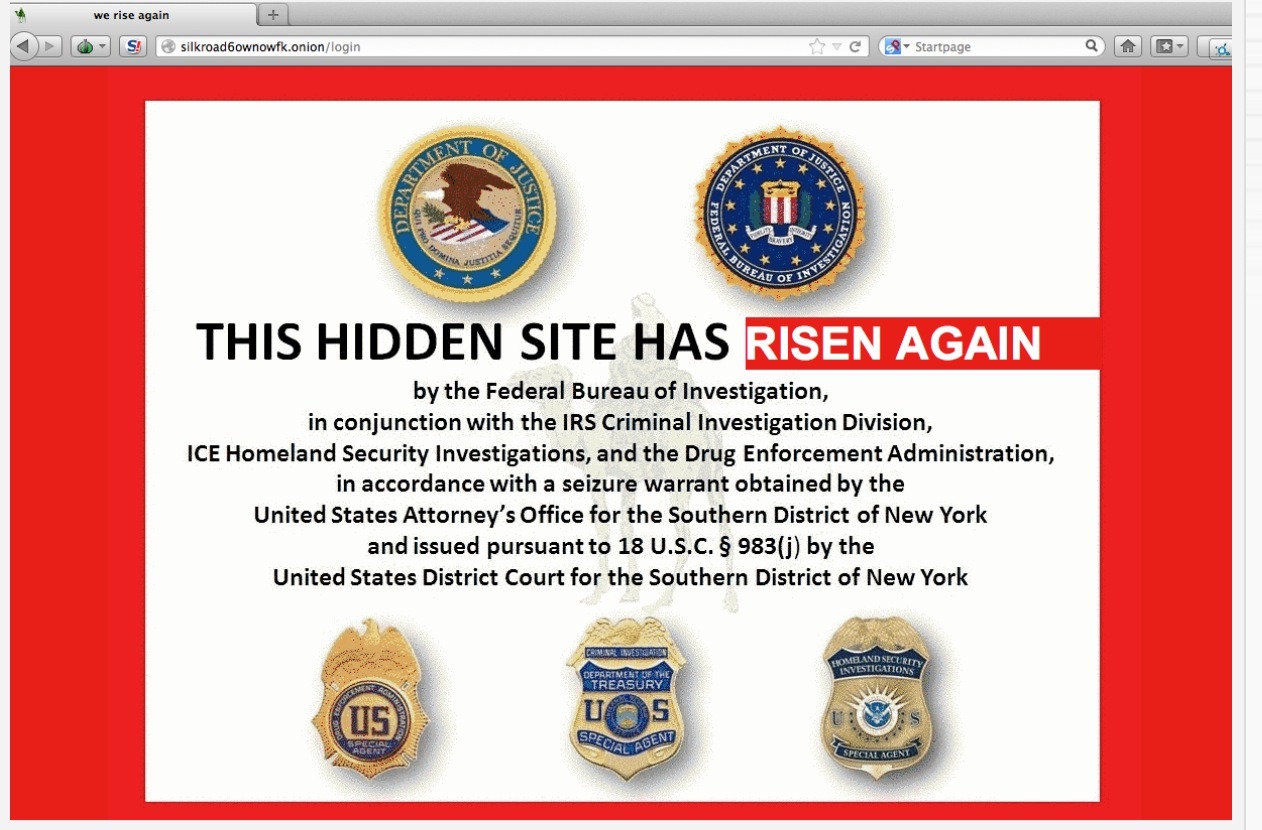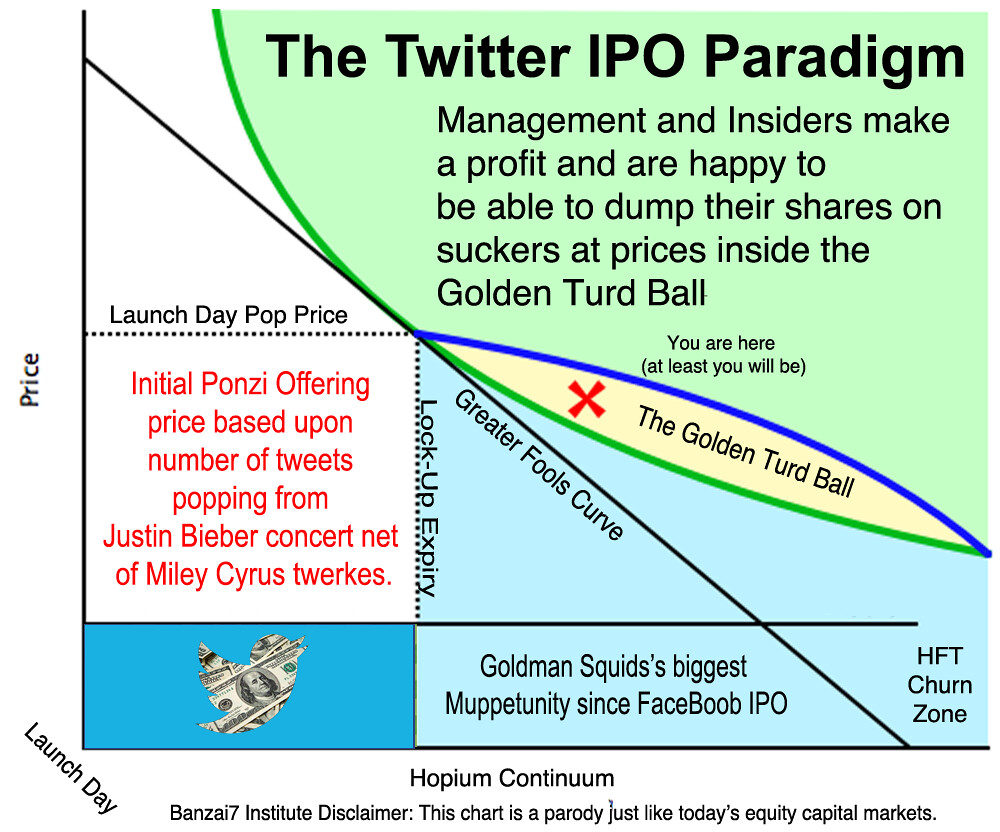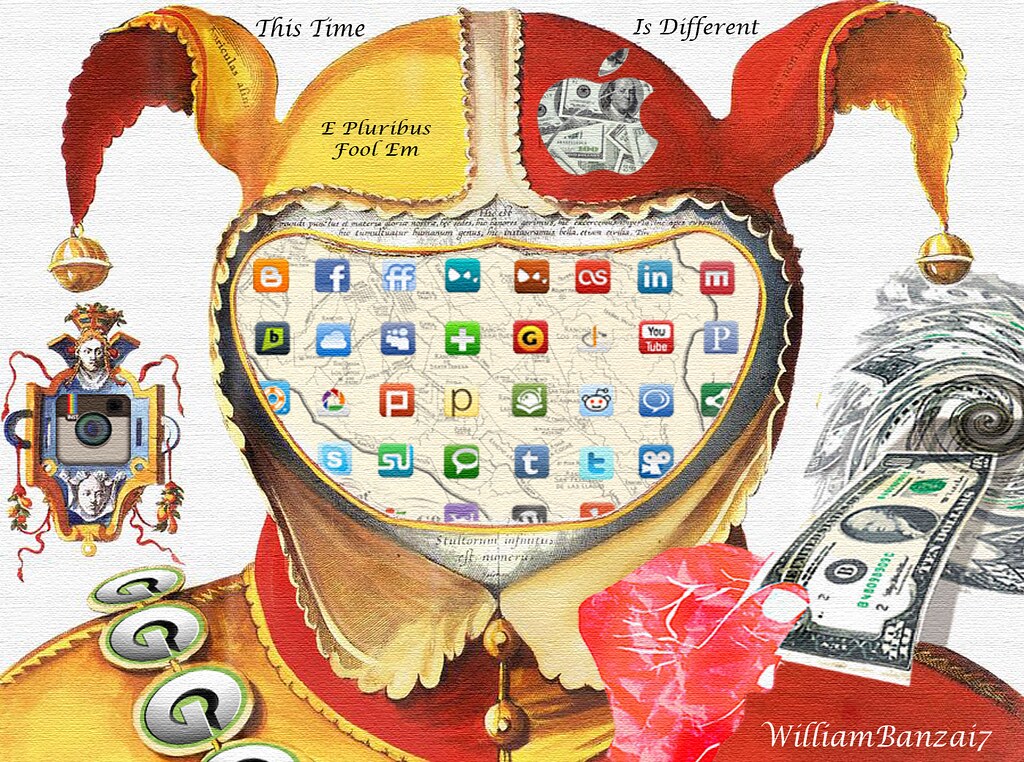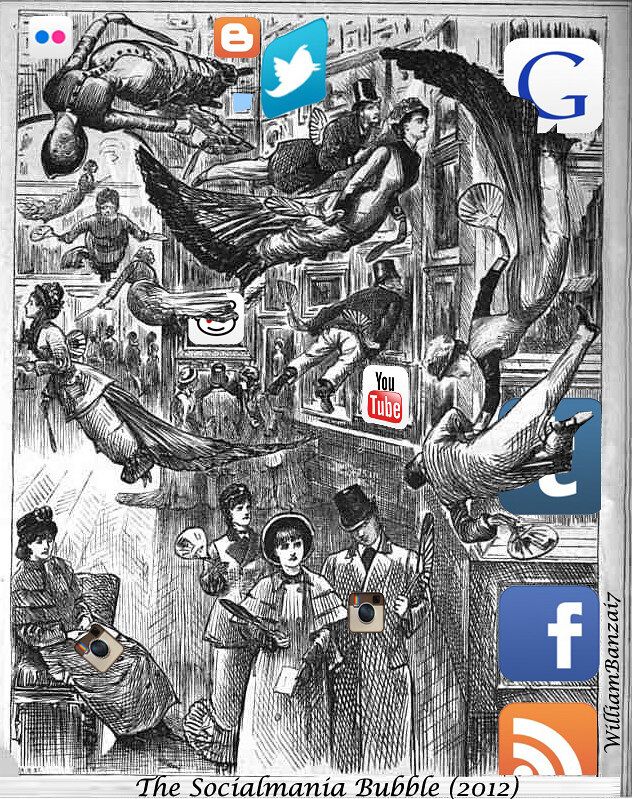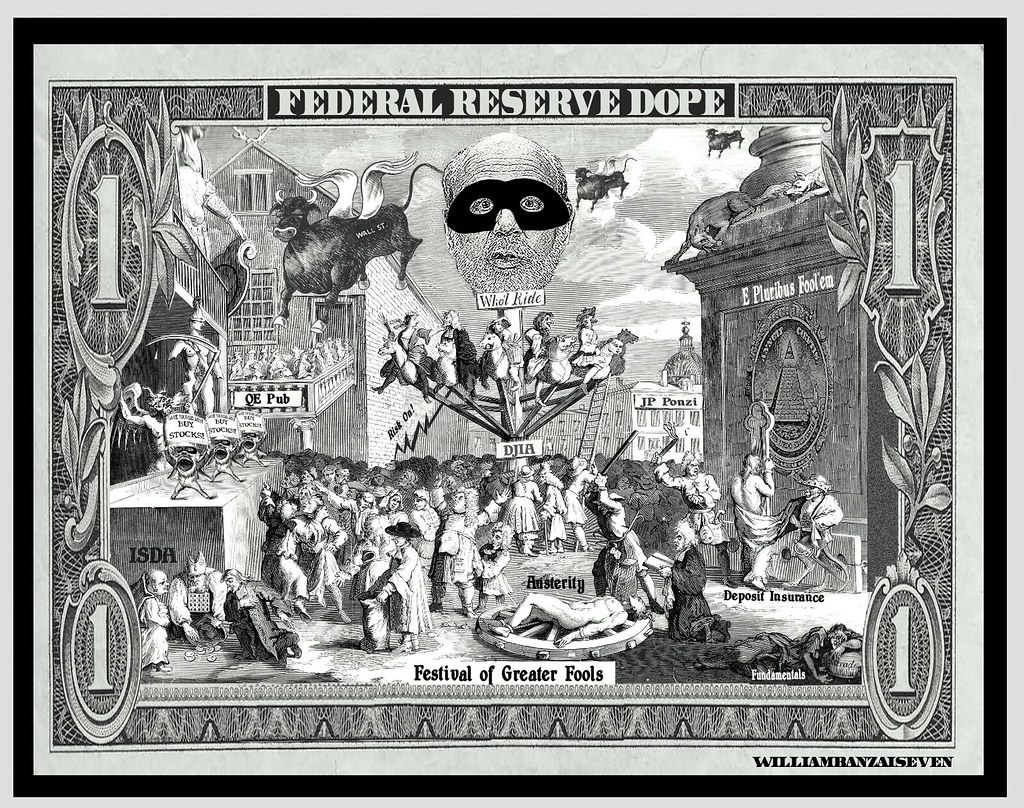When it comes to US equities today, the picture below summarizes it all…
… the only question is whether the NYSE breaks to celebrate the year’s overhyped social media IPO.
Aside from the non-event that is the going public of a company that will likely not generate profits for years, if ever, the overnight market has been quiet with all major stock indices in Asia trading modestly lower on the back of a modestly stronger dollar, although the main currency to watch will be the Euro (German Industrial production of -0.9% today was a miss of 0.0% expectations and down from 1.6% previously), when the ECB releases its monthly statement at 7:45 am Eastern when it is largely expected to do nothing but may hint at more easing in the future. On the US docket we have the weekly initial claims (expected at 335k) which now that they are again in a rising phase, have been the latest data item to be ignored in the Bizarro market, as well as the latest Q3 GDP estimate, pegged by consensus at 2.0%.
Key US Events
- US: Q3 GDP q/q, cons 2.0% (8:30)
- US: Initial jobless claims, cons 335k (8:30)
- US: Fed speakers – Dudley (13:30), Stein (13:50)
Market Recap from RanSquawk:
Stocks traded lower in Europe this morning, although financials outperformed and credit spreads tightened as market participants positioned for the upcoming ECB policy decision. Financials were supported by an encouraging set of earnings by Commerzbank, SocGen and Credit Agricole, with Commerzbank also seen among the best performing stocks in the German DAX index this morning up over 9%. Even though the benchmark borrowing rate is expected to be held unchanged by the ECB, the Euribor curve flattened, albeit marginally. At the same time, Bunds failed to benefit from the risk averse sentiment and traded near the unchanged mark as market participants not only awaited the outcome of policy meetings by the BoE and the ECB, but also digested supply from Spain and France. Going forward, apart from awaiting monetary policy decisions, attention will also be paid to the release of the latest weekly jobless data, as well as the 1st estimate of Q3 US GDP growth from the US.
Overnight bulletin summary from RanSquawk and Bloomberg
- Going forward, apart from awaiting monetary policy decisions, attention will also be paid to the release of the latest weekly
jobless data, as well as the 1st estimate of Q3 US GDP growth from the US. - Treasuries steady before BOE, ECB policy decisions and Draghi press conference; U.S. payrolls due tomorrow, est. 120k, unemployment rate rising to 7.3% from 7.2%.
- 2Y and 3Y yields near lowest levels since June after Fed paper that made case for Fed to lower its unemployment rate threshold for keeping fed funds target near zero to 5.5% from 6.5%
- Bank of England expected to keep main rate at 0.5%, ECB to hold its rate at 0.50%
- Draghi must decide whether it’s time to use one of his remaining interest-rate cuts; as ECB runs out of conventional tools, it risks being pushed toward QE or a negative deposit rate
- China’s interest-rate swaps climbed to the highest level since June as the PBOC refrained from adding funds to the financial system; four-day Communist Party plenum starts on Nov. 9, will study making the yuan an international reserve currency in some markets
- Obama moved to quell growing dissent among Democratic lawmakers over the troubled rollout of his signature health- care law, meeting for two hours at the White House with senators facing re-election
- Republicans cite their 2.5-point defeat in the Virginia governor’s race as proof that Ken Cuccinelli would have reversed his fortunes if he’d hammered earlier and longer on Obamacare
- Sovereign yields mixed, EU peripheral spreads widen. Nikkei -0.76%, Shanghai falls 0.5%. European stocks, U.S. equity- index futures decline. WTI crude and copper gain; gold declines
Asian Headlines
Moody’s senior VP Byrne said that Japan needs more tax revenue from companies and also needs more fiscal discipline.
EU & UK Headlines
German Industrial Production SA (Sep) M/M -0.9% vs. Exp. 0.0% (Prev. 1.4%, Rev. 1.6%)
German Industrial Production WDA (Sep) Y/Y 1.0% vs. Exp. 0.8% (Prev. 0.3%, Rev. 0.9%)
Eurogroup head Dijsselbloem said Greece is unlikely to see a debt writedown, with little support for such a writedown.
Spanish bond auction results, sells EUR 4.03bln vs. Exp. EUR 3-4bln.
– Sells EUR 2.38bln in 3.75% 2018, b/c 1.9 (Prev. 2.47) and avg. yield 2.871% (Prev. 3.059%)
– Sells EUR 1.15bln in 4.4% 2023, b/c 2.6 (Prev. 1.96) and avg. yield 4.164% (Prev. 4.269%)
– Sells EUR 0.507bln in 5.90% 2026, b/c 2.4 (Prev. 1.55) and avg. yield 4.469% (Prev. 4.540%)
French bond auction results, sells EUR 6.49bln vs. EUR 5.5-6.5bln.
– Sells EUR 4.283bln in 2.25% 2024 (new line), b/c 1.975 (Prev. 1.88) and avg. yield 2.41% (Prev. 2.37%)
– Sells EUR 2.21bln in 3.25% 2045, b/c 1.891 (Prev. 2.28) and avg. yield 3.41% (Prev. 3.60%)
US Headlines
More than a dozen anxious Senate Democrats facing re-election next year met with President Obama at the White House Wednesday to review the administration’s progress in fixing technical problems hobbling the rollout of the Affordable Care Act.
Equities
Stocks traded lower in Europe this morning, though the stock index in Germany outperformed following an encouraging set of earnings by Siemens, Commerzbank and Adidas. Consumer goods led the move higher, also largely driven by earnings with Continental and Adidas among the best performers there.
In terms of the European reporting season, analysts at Deutsche Bank note that sales beats are at historic lows of 36% (vs. long-term average of 59%), with EPS beats at 50% (vs. long-term average of 57%). The US remains stable with EPS beats at 75%, slightly ahead of the long-term average. Sales beats (54%) have improved marginally in the last week.
Finally, Twitter raised USD 1.82bln in its IPO after 70mln shares were
sold at USD 26 each. For more US equity related stories see Daily US Equity Opening News at 1400GMT/0800CST.
FX
EUR/USD and GBP/USD traded steady, as market participants refrained from making a directional commitment ahead of the key risk events.
EUR/GBP implied 1m vols fell below the 100DMA line this morning, though
the trend remains in a bullish price pattern. Looking elsewhere, AUD underperformed overnight following the release of weaker than expected jobs data out of Australia which showed Employment Change at 1.1K vs. Exp. 10.0K.
Commodities
China October 21-31 average daily steel output at 2.098mln tonnes which is down 0.4% from the previous 10 days, according to China Iron and Steel Association data.
China’s importers of refined copper have been asked by Codelco to cut term shipments in the H1 of 2014, according to sources.
Ahead of talks between the P5+1 and Iran due to begin today, a senior US administration official said the US wants first steps from
Iran to be the halting and rolling back of parts of its nuclear
programme. The official added that the US is willing to offer reversible sanction relief if Iran takes acceptable steps on its nuclear programme.
China’s CNOOC to raise natural gas supplies by 22% to 12.8bcm over winter demand period.
Libya’s state-oil NOC resumes loading at the 160,000 bpd capacity Mellitah port.
There is no obvious link between the EUR22bn order book for the Italian sovereign retail bond (named BTP Italia) and the warning by the head of Italy’s business association yesterday that the country is in a ‘worrying’ deflationary situation. But as Portugal 10y benchmark yields fell by another 22bp to below 6%, the subtle message is that investors are rushing to pick up yield in whatever credit they can as deflation worries intensify. Is the ECB equally as worried or does it believe that the drop in annual CPI to 0.7% in October is transitory?
Only 3 out of 70 strategists and economists expect the ECB to cut rates today, but this does not hide the fact that many expect the bank to prepare the ground for a rate cut in December, before possibly announcing another LTRO in the New Year. The logic is straightforward: with inflation moving further away (down) from the ECB’s unique policy target of below but close to 2%, it will take more time for inflation to return to 2% over the relevant policy horizon. Therefore, lower rates can be justified. The NZD, AUD and GBP are better currencies to express short EUR views than vs the USD, at least until we get US payrolls data out of the way tomorrow. With investors already braced for a dovish message, the skew is for a EUR squeeze higher on a more neutral statement from Draghi and outlook for inflation that will require no major adjustment. That was, after all, the message from the European Commission on Wednesday, even with a 2014 EUR/USD assumption of 1.36.
From the US today we have the advance estimate of Q3 GDP. Our forecast is for 2.3% annualised growth, ahead of the 2.0% consensus. A negative surprise should see a pull back in US 10y swap rates and a flatter curve, though momentum is unlikely to be strong given that payrolls are due tomorrow. We look for initial claims to have risen to 340K.
In the UK, the BoE is expected to leave Bank Rate and the Asset Purchase Target unchanged at 0.50% and £375bn respectively. The basis for the MPC meeting today is the Inflation Report next week and so any reaction in sterling and swaps is likely to be delayed until then. We reiterate our view for lower EUR/GBP and wider UK/EU swap spreads.
The Czech National Bank (CNB) and the Malaysian central bank are also due to make their benchmark rate decisions. The CNB has had a loose monetary policy stance for some time with its benchmark rate at 0.05% and is unlikely to change its stance. However, a tight vote is expected on FX intervention as was the case in September. The Malaysian central bank is also expected to keep its policy rate on hold at 3.00%, which could add support for further gains in USD/MYR.
We conclude with Jim Reid’s overnight recap by way of Deutsche Bank
Today is the the main European action of the week i.e. today’s ECB meeting. We also have the 1st estimate of Q3 US GDP growth today and payrolls tomorrow so its fair to say that the relatively quiet week so far will likely spring into life before the weekend. For today, DB’s European Economics team expect the ECB to reiterate its easing bias but not to announce any concrete decisions, with forward guidance being maintained. In the press conference they anticipate greater focus on low inflation which should enhance the ECB’s lower for longer forward guidance message. They don’t expect any action on the fast shrinking LTRO’s. The policy move they see as most likely in the near future is a rolling forward of the fixed price, full allotment regime for liquidity which is currently scheduled to end in mid-2014. With the results of the AQR/EBA not being released until late 2014, they expect the full allotment regime to be pushed to mid-2015. They also expect the press conference to touch on the EUR exchange rate. But here, our economists expect Draghi to deflect the exchange rate’s relevance via its impact on inflation forecasts – again part of the ECB strategy to use the fear of lower inflation to strengthen the credibility of forward guidance.
As for US GDP, regular readers will be aware by now that the EMR focuses heavily on the nominal GDP print as well as the real number due to the need to try to erode the huge debt facing the developed world as quickly as is possible. Current consensus expectations are for 2% real growth with the price index 1.4% higher thus implying annualised nominal GDP of 3.4%. The first two quarters of the year have hovered at around 3% on this measure taking us back down to levels last seen in the early stages of the recovery in 2010. So if today’s number is at consensus it’s another very low nominal US GDP reading relative to history, albeit one that Europe would currently be very happy with. However a continued low reading should keep the Fed aware of their duel mandate responsibilities and maybe the Fed and the market should factor in low inflation into the taper debate more than they currently do. There seems to be an automatic assumption that inflation will return to ‘normal’ next year. So definitely one to watch today. For the record DB US economist’s are forecasting 3% real growth today – well ahead of consensus.
Ahead of today’s risk events, markets have been trading with a cautious tone. All major stock indices in Asia are ticking lower this morning led by the Hang Seng (-0.8%) and the TOPIX (-0.5%). On the fixed income side, USTs are slightly firmer across the curve as are ACGBs and JGBs which follows a mixed day for fixed income yesterday as markets debated the potential for a lower-for-longer rate path from the Fed. Following a volatile week, most Asian currencies are firmer against the USD overnight with the exception of the AUD which is down half a cent versus the greenback following a tick up in the Australian unemployment rate to 5.7% in the month of October. After gaining 0.3% yesterday on market chatter that the ECB will hold fire on further rate cuts today, EURUSD is broadly unchanged heading into today’s governing council meeting.
With one-third of the European Q3 reporting season behind us, DB’s equity strategist Jan Rabe has provided an update on corporate earnings performance. The conclusion is that European expectation beats remain well below their long-term averages for both EPS and Sales, while Asian and US beats are broadly in line with past reporting seasons. With 214 of the Stoxx600 companies having reported as of today, the European reporting season looks more and more likely to remain a weak one: Sales beats are at historic lows of 36% (vs. long-term average of 59%), with EPS beats at 50% (vs. long-term average of 57%). The picture is more upbeat elsewhere, The US remains stable with EPS beats at 75%, slightly ahead of the long-term average. Sales beats (54%) have improved marginally in the last week. In Asia, EPS beats now standing at 49% and Sales beats (54%) are slightly ahead of long-term average (53%).
Earnings aren’t really the main story at the moment with liquidity still the dominant theme. Indeed as equity markets push up against record highs and global credit indices trade at or near multiyear tights, it’s fair to say that financial conditions have eased considerably over the past few months. Indeed, close to a record number of corporates have been taking advantage of strong funding conditions to tap credit markets and a number of corporate have been issuing debt to buy back more expensive legacy debt. Bloomberg points out that this year’s rate of global corporate credit issuance is not too far from 2012’s record levels. Issuance this year to date of $3.31 trillion compares with $3.44 trillion in the same period of 2012, when a record $4 trillion of the debt was eventually issued. Interestingly, despite the volatility in Q2 and Q3, emerging market companies have issued $235bn of corporate bonds this year, already surpassing last year’s record (Financial Times).
Turning to today’s docket, up first will be Spanish and German industrial output numbers. Attention will then turn to the
BoE policy announcement which will be followed shortly after by the ECB meeting. Draghi holds his press conference 45 minutes after that. Note that Draghi will also be speaking later in the day at a conference organised by Germany’s Die Zelt newspaper. Stateside, we get initial jobless claims, and consumer credit numbers today, in addition to advanced Q3 GDP print. The Fed’s Dudley and Stein will be speaking today.
![]()
via Zero Hedge http://feedproxy.google.com/~r/zerohedge/feed/~3/m9SCSJBkBrY/story01.htm Tyler Durden






 Two weeks ago we learned that
Two weeks ago we learned that In California, Lincoln High
In California, Lincoln High